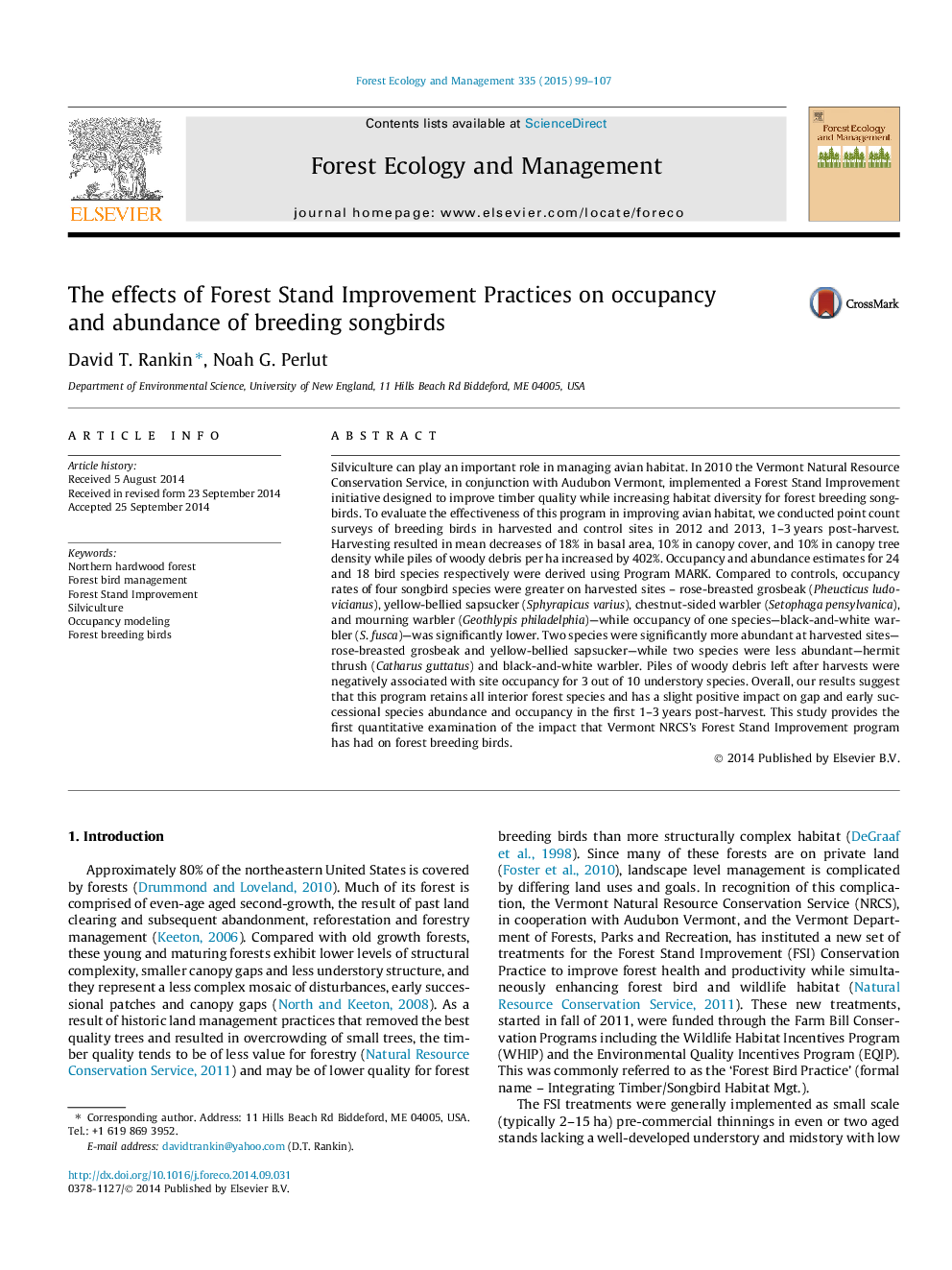| کد مقاله | کد نشریه | سال انتشار | مقاله انگلیسی | نسخه تمام متن |
|---|---|---|---|---|
| 6542981 | 159192 | 2015 | 9 صفحه PDF | دانلود رایگان |
عنوان انگلیسی مقاله ISI
The effects of Forest Stand Improvement Practices on occupancy and abundance of breeding songbirds
ترجمه فارسی عنوان
اثرات اقدامات بهبود پایه جنگل بر اشغال و فراوانی پرندگان
دانلود مقاله + سفارش ترجمه
دانلود مقاله ISI انگلیسی
رایگان برای ایرانیان
کلمات کلیدی
جنگل جنگل شمالی، مدیریت پرنده جنگل، بهبود پایه جنگل، جنگلداری، مدل سازی مسکن پرورش پرندگان جنگل،
موضوعات مرتبط
علوم زیستی و بیوفناوری
علوم کشاورزی و بیولوژیک
بوم شناسی، تکامل، رفتار و سامانه شناسی
چکیده انگلیسی
Silviculture can play an important role in managing avian habitat. In 2010 the Vermont Natural Resource Conservation Service, in conjunction with Audubon Vermont, implemented a Forest Stand Improvement initiative designed to improve timber quality while increasing habitat diversity for forest breeding songbirds. To evaluate the effectiveness of this program in improving avian habitat, we conducted point count surveys of breeding birds in harvested and control sites in 2012 and 2013, 1-3Â years post-harvest. Harvesting resulted in mean decreases of 18% in basal area, 10% in canopy cover, and 10% in canopy tree density while piles of woody debris per ha increased by 402%. Occupancy and abundance estimates for 24 and 18 bird species respectively were derived using Program MARK. Compared to controls, occupancy rates of four songbird species were greater on harvested sites - rose-breasted grosbeak (Pheucticus ludovicianus), yellow-bellied sapsucker (Sphyrapicus varius), chestnut-sided warbler (Setophaga pensylvanica), and mourning warbler (Geothlypis philadelphia)-while occupancy of one species-black-and-white warbler (S. fusca)-was significantly lower. Two species were significantly more abundant at harvested sites-rose-breasted grosbeak and yellow-bellied sapsucker-while two species were less abundant-hermit thrush (Catharus guttatus) and black-and-white warbler. Piles of woody debris left after harvests were negatively associated with site occupancy for 3 out of 10 understory species. Overall, our results suggest that this program retains all interior forest species and has a slight positive impact on gap and early successional species abundance and occupancy in the first 1-3Â years post-harvest. This study provides the first quantitative examination of the impact that Vermont NRCS's Forest Stand Improvement program has had on forest breeding birds.
ناشر
Database: Elsevier - ScienceDirect (ساینس دایرکت)
Journal: Forest Ecology and Management - Volume 335, 1 January 2015, Pages 99-107
Journal: Forest Ecology and Management - Volume 335, 1 January 2015, Pages 99-107
نویسندگان
David T. Rankin, Noah G. Perlut,
